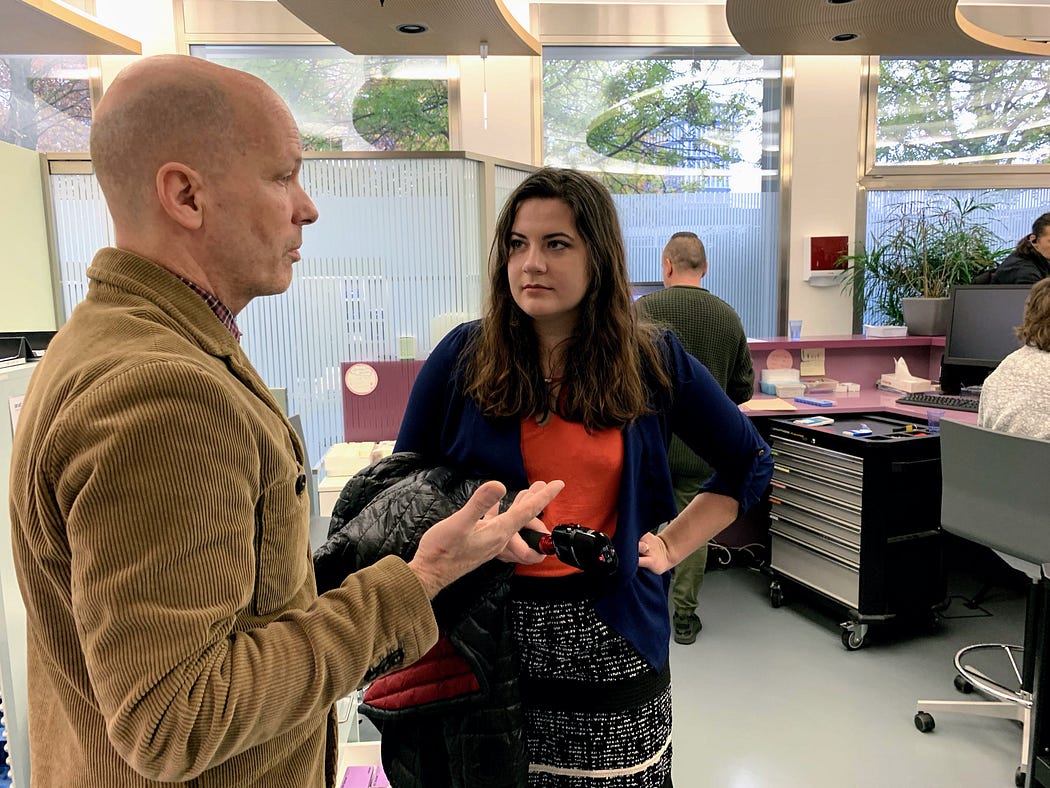‘What it means to be human:’ How nonprofit news organizations bring mental health reporting to the forefront
May 26, 2023
As a practicing nurse through the 1990s, Rose Hoban witnessed many patients whose care was impeded — often by health care policies they didn’t know existed.
To help advance the cause of her patients, she soon pivoted to journalism — joining North Carolina Public Radio (WUNC) in 2005. There, she began extensively reporting on the state’s mental health care system.
When she arrived at the news station, five people were covering health care at the competing local daily newspaper. By the time she left in mid-2011, all five of those people had left. Realizing that she was “the last person standing,” Hoban said, was part of her inspiration for launching North Carolina Health News in 2012. The organization, a member of the Institute for Nonprofit News (INN), has since provided crucial information about health care in the state — topics ranging from state health policy to mental health.

Data from the 2023 INN Index survey shows 19% of INN member outlets — about 60 of 315 respondents — primarily report on health and medicine.
For Mental Health Awareness Month, INN spoke with a handful of these organizations who discussed furthering understanding of mental health issues and producing solutions-oriented stories that spark policy change.
Building empathy, understanding and community engagement
Christine Herman began her journey as a health reporter in 2017, working with Illinois Public Media until she joined Side Effects Public Media as its managing editor in 2021.
Side Effects, a regional health news collaboration from WFYI Public Media (Indianapolis, Indiana), explores how place, policy and economics affect Americans’ health.
An important goal of Side Effects’ reporting, Herman said, is building empathy for those experiencing something others may have never experienced or wasn’t aware was a problem.
“When we do stories, and when we talk to people who are willing to share their stories, I think there’s so much potential and so much power to increase awareness and understanding, and also increase empathy, which I think is just really important for having thriving and healthy communities,” she said.
Reporting on mental health means talking to people who have lived experience with what you’re reporting on, Herman said. When approaching these difficult and nuanced topics, it’s key to remember best practices for trauma-informed reporting and minimizing harm.
“… when you hear a personal story of someone, who, for example, is struggling with mental health issues and unable to access affordable treatment, I think you recognize that the people affected by these issues are people just like you, just like your family member or your friends or people in your neighborhood or community.” — Christine Herman, managing editor of Side Effects Public Media
The Dart Center for Journalism & Trauma describes trauma-informed journalism as reporting that “acknowledges both the negative and challenging aspects of traumatic exposure and the ways in which individuals, families and communities cope, grow and adapt in the face of adversity.”
Katti Gray, who works as editor of Youth Today and the Juvenile Justice Information Exchange published by the Center for Sustainable Journalism, emphasizes the importance of covering “mental illness within the framework of what it means to be human” and not getting caught up on diagnostic labels.
“What does that [label] mean? How does it show up in people’s lives every day? Breaking it down, making the science accessible, I think that’s very important,” she said.
This idea of “humanizing the issues” is another important aspect of mental health reporting Herman emphasized.
“It’s very easy to talk about numbers and data, but when you hear a personal story of someone, who, for example, is struggling with mental health issues and unable to access affordable treatment, I think you recognize that the people affected by these issues are people just like you, just like your family member or your friends or people in your neighborhood or community,” Herman said.
Earlier this year, Side Effects reporter Darian Benson produced a five-part audio series telling the stories of people across Indiana who have been impacted in different ways by substance use and addiction. Community engagement, Herman said, played a huge role in the creation of the series.
“For us, community engagement means that we’re taking time to listen to people in our communities, to the audiences that we’re trying to reach and have their input on the type of reporting we do,” she said.
For this project, Side Effects hosted listening sessions with people all over the Midwest — those who work in the recovery space, who work in addiction treatment, who have lived experience with substance use. By doing this community engagement work, Side Effects learned what types of coverage its audience felt was missing on the issue: stories of progress and hope.
Sharing successes and solutions, not just failings
Rob Waters first started covering mental health in the 1980s, working for the Tenderloin Times in San Francisco.
When the pandemic hit a few years ago, he began to see its intense mental health impacts and felt there was a need for a dedicated news site focused exclusively on mental health. He and long-time health and science journalist Diana Hembree co-founded MindSite News to meet this need, launching in September 2021.
“The reason that we exist is because the reporting on these issues… has not been a focus of most media organizations,” Waters said. “We think that the best way to do something about that is to create a good source of news and reporting on these issues, and then to partner with news organizations around the country to distribute our stories.”
Waters shared that while a major goal of the outlet’s reporting is revealing issues, it’s also about presenting solutions.
“On the one hand, we want to expose the problems and lay them bare,” Waters said. “And on the other hand, we want to lift up and shine a light on new ways of doing things or better ways of doing things or things that are already being done, but not done at a scale that really helps people and that have an impact.”
A story the organization produced with Bridge Michigan serves as one example of this. The news outlets examined a program that provides social-emotional learning (SEL) in Michigan schools, highlighting its impact. The legislature subsequently increased funding for the program.
During the listening sessions for Side Effects’ substance use series, Herman said many people noted the main problem they see with media coverage of addiction is that all the coverage is negative.
“It’s people dying. It’s communities being ravaged. And that reporting is important… We can’t not report on those things,” she said. “But what they said they feel like is missing is stories about progress that’s being made on addressing these issues, because there is progress being made in different communities.”
Earlier this year, Herman partnered with the Carter Center’s Mental Health Parity Collaborative and Center for Public Integrity to produce a piece on children’s mental health. The reporting illuminated how families across the U.S. have relinquished custody rights to the state to get their children the mental health care they need. Herman examined how states like Ohio, New Jersey, California and Washington are pushing to reform their practices.
“Good reporting is not just focusing on problems all the time, but showing what solutions look like,” she said. “If one community has found a solution to this problem, then there’s another community where they’re not implementing that solution, that’s accountability for the places where they’re not taking action to address a problem.”

Reaching the legislature and changing policy
In 2019, North Carolina Health News made the decision to allow its content to be republished for free. Hoban said that in 2022, about 130 different publications republished the organization’s work. Its stories are also digested several times a week in the NC Insider, a daily newsletter for state government officials.
“We have lawmakers who call us on a regular basis from both sides of the aisle,” Hoban said, “directing their constituents to call us and also saying, ‘You’ve written about this. What would be the best way to address this particular problem?’”
Last year, Hoban received a call from a legislator about a constituent who had a daughter who was sexually assaulted at a psychiatric hospital in the state. Hoban said Taylor Knopf, assistant editor and mental health reporter at North Carolina Health News, spent nearly five months building trust and speaking with the family, obtaining records and pressing the hospital for comment.
After the article was published in November 2022, state regulators made a surprise visit to the hospital, confirming “staff failed to supervise to provide a safe and therapeutic environment for behavioral health patients.” The latest follow-up, published May 10, 2023, reports that federal regulators have threatened to terminate Medicare funding for the hospital.
“We have a list right now of about 35 parents whose children have had similar experiences in the state’s mental health system…These people see our stories and they call us because they don’t know where else to turn.”

Waters said many find their way to this type of reporting through a “sense of outrage” about the nature of the mental health system in this country.
“We are drawn to want to expose those problems, to bring them forward to the public and to policymakers, so that they can be really understood and seen and changed. So we definitely hope that our reporting drives policy change, because policy change is hugely needed in this space.”
